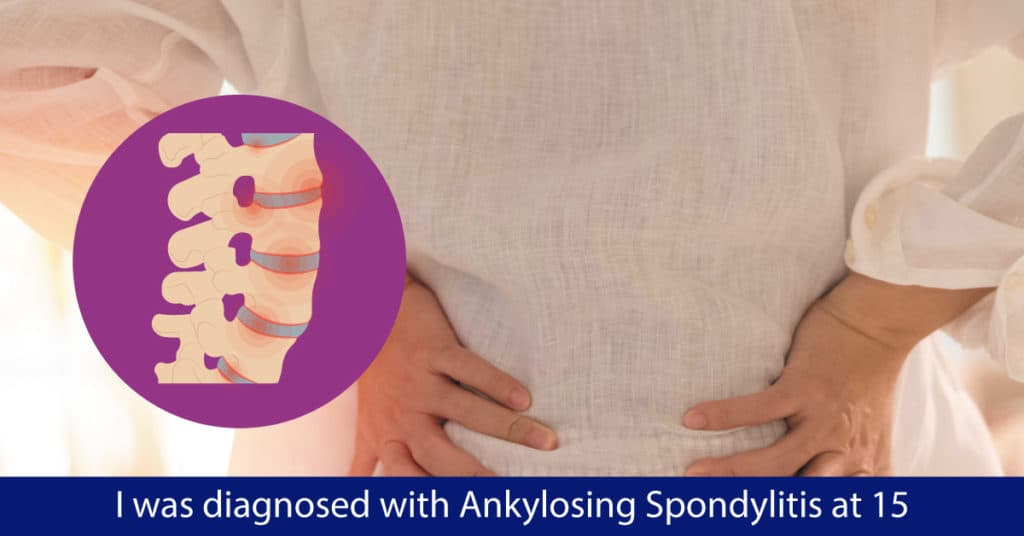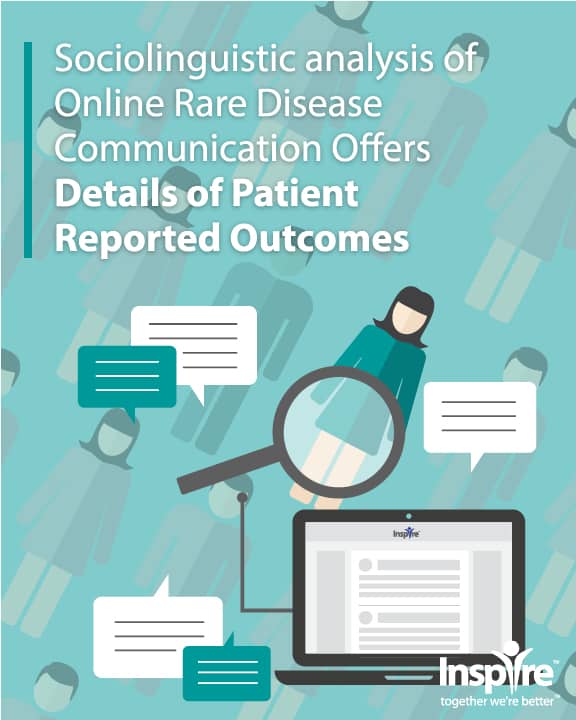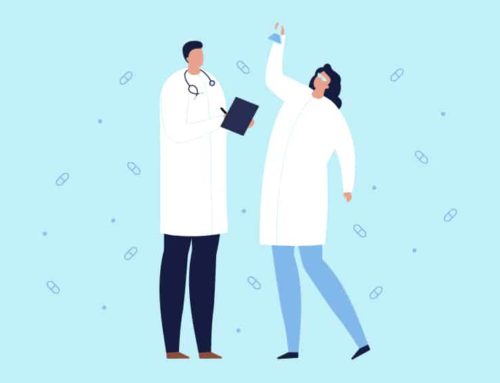I was diagnosed with Ankylosing Spondylitis at 15

By Kathleen Hoffman, PhD, MSPH
Imagine a patient with inflammatory joint pain. You’re probably not visualizing a young person in his 20’s or teens with severe lower back pain, but that’s a likely scenario for sufferers of ankylosing spondylitis (AS). One Inspire member said:
I was diagnosed with AS at 15 years old … in my case it took an emergency room visit when I could hardly move and freaked out. I had an amazing House-style emergency room doctor who solved the mystery by ruling out injuries/mechanical problems and finally determined it was rheumatic.
Ankylosing spondylitis is an “uncommon form of arthritis,”1 a subcategory of rheumatoid arthritis, an autoimmune condition causing inflammation of the joints. “Ankylosing” refers to the stiffening or fusing of the joints, and “spondylitis” means irritation of the spine, so AS features spinal joint inflammation that can lead to bone growth and joint fusing — a painful and stiff back.2
What distinguishes AS from the many other kinds of back pain? Its general characteristics are that AS pain is most severe in the lower back and buttocks; it has a gradual onset with most cases starting after puberty but before age 40; the pain improves with exercise but not with rest. AS can also affect the eyes in up to 40 percent of cases, leading to episodes of eye inflammation called acute iritis; and it’s not typically associated with peripheral arthritis.3,4
It was thought to be more prevalent in men than in women, but some studies suggest women’s symptoms may be milder and simply more difficult to diagnose by radiograph. In total, it’s estimated that 300,000 Americans have AS.5,6
There is also a genetic component. Approximately one in five people affected by ankylosing spondylitis have a relative with the same disorder. A genetic “marker” called HLA-B27 is present in most people who have AS, but having it is not diagnostic: 8% of white Americans and 2-3% of African Americans have that marker, and 80% of those people never develop AS. The presence of HLA-B27 can still help distinguish AS in that most people with AS lack the genetic marker common to people with rheumatoid arthritis (RA), human leukocyte antigen (HLA) HLA-DR4. (Only sixty cases have been found since 1976 where the patient had both.3) It is thought that having HLA-B27 leaves the person vulnerable to having AS triggered environmentally.5
Over 7400 patients and caregivers have posted about and expressed an interest in AS on Inspire. Inspire members share their experience with AS in the context of their overall health, wanting to know if other people “have what I have”:
I recently read about Ankylosing Spondylitis and read that it can affect people more frequently if they also suffer from psoriasis. Has anybody else got any experience with this… Going to get an appointment and ask if this is what it might be but would love to hear from the psoriasis community.
…Has anyone with EDS [Ehlers Danlos Syndrome] also been diagnosed with Ankylosis-Spondylitis?
Previously largely treated with NSAIDs and exercise to reduce inflammation and preserve flexibility, several TNF inhibitors are now FDA-approved for treating AS. A 2018 literature review found six TNF inhibitors studied to be superior to placebo at 12- and 24-weeks using the Bath Ankylosing Spondylitis Disease Activity Index (BASDAI) and the Bath Ankylosing Spondylitis Functional Index. (BASFI).7
I started [TNF inhibitor] at the suggestion of several folks here on Inspire who motivated me to take a biologic to treat my AS after I wrote a post complaining of long term unmanageable excruciating pain.
I hope [TNF inhibitor] gives me pain relief and improves my mobility so I can let my 8-year old give me a big bear hug without me pushing back and saying “gentle touches only please”.
Speaking in Healio Rheumatology about TNF inhibitors, Philip J. Mease, MD, from the Swedish Medical Center and the University of Washington in Seattle, said “TNF inhibitors were the first treatment to be fully effective in ankylosing spondylitis….It was found that the symptoms of the disease, including pain, stiffness, physical function and quality of life all improved with these drugs.”5
AS is not a simple diagnosis. Inspire members discuss how they came to be diagnosed with AS, what they’re being treated with, and how that diagnosis fits into the context of their overall patient journey. They want to know if anyone else has their symptoms and comorbidities, how other people’s treatments compare to theirs, and what clinical trials might be available. For this complex autoimmune disease and many others, Inspire is a source of information for both members and researchers to better understand the disease itself, the unmet needs of those living with the condition, its etiology, and possible connection to other autoimmune disorders.
Inspire offers a trusted community to patients and caregivers. Our goal with this blog, this website and our content is to provide the life science industry access to the true, authentic patient voice. In so doing, we support faithful operationalization of patient-centricity. Take a look at our case studies, eBooks and news outlet coverage.
References:
1 https://www.pfizer.com/news/hot-topics/what_is_ankylosing_spondylitis
2https://www.hopkinsmedicine.org/health/conditions-and-diseases/ankylosing-spondylitis
3https://www.ncbi.nlm.nih.gov/books/NBK532288/
4 https://medlineplus.gov/genetics/condition/ankylosing-spondylitis/
5https://orthop.washington.edu/patient-care/articles/arthritis/ankylosing-spondylitis.html
6https://www.healio.com/news/rheumatology/20200701/tnf-inhibitors-first-fully-effective-treatment-in-ankylosing-spondylitis
7https://www.jrheum.org/content/45/4/481






